I’m still working through the Siem Reap photos and finding that, tree roots, stone ruins, bas-reliefs and all their shadows, lend themselves beautifully to black and white. I’m not surprised, whilst some images look good in colour, the key elements in many of them relate to shape, form, texture and the direction and quality of light.

Tree and seedling, Ta Prohm, Cambodia
In the above image, it may not be obvious but the tree (known as a Spung) and the seedling are growing on top of a sandstone wall.
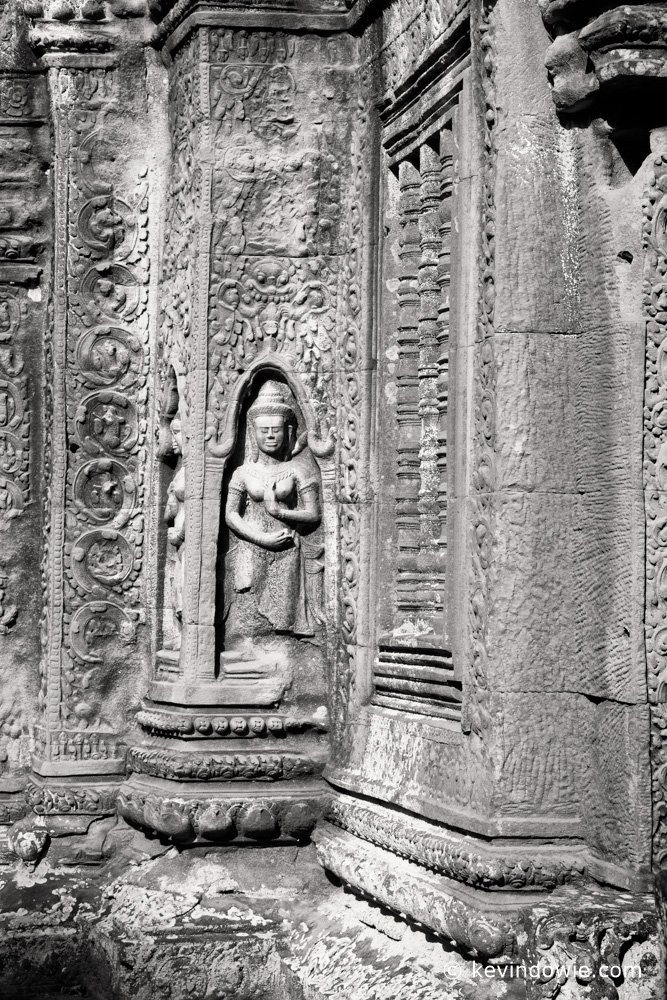
Apsara, the celestial maiden, Ta Prohm, Cambodia. Monochrome
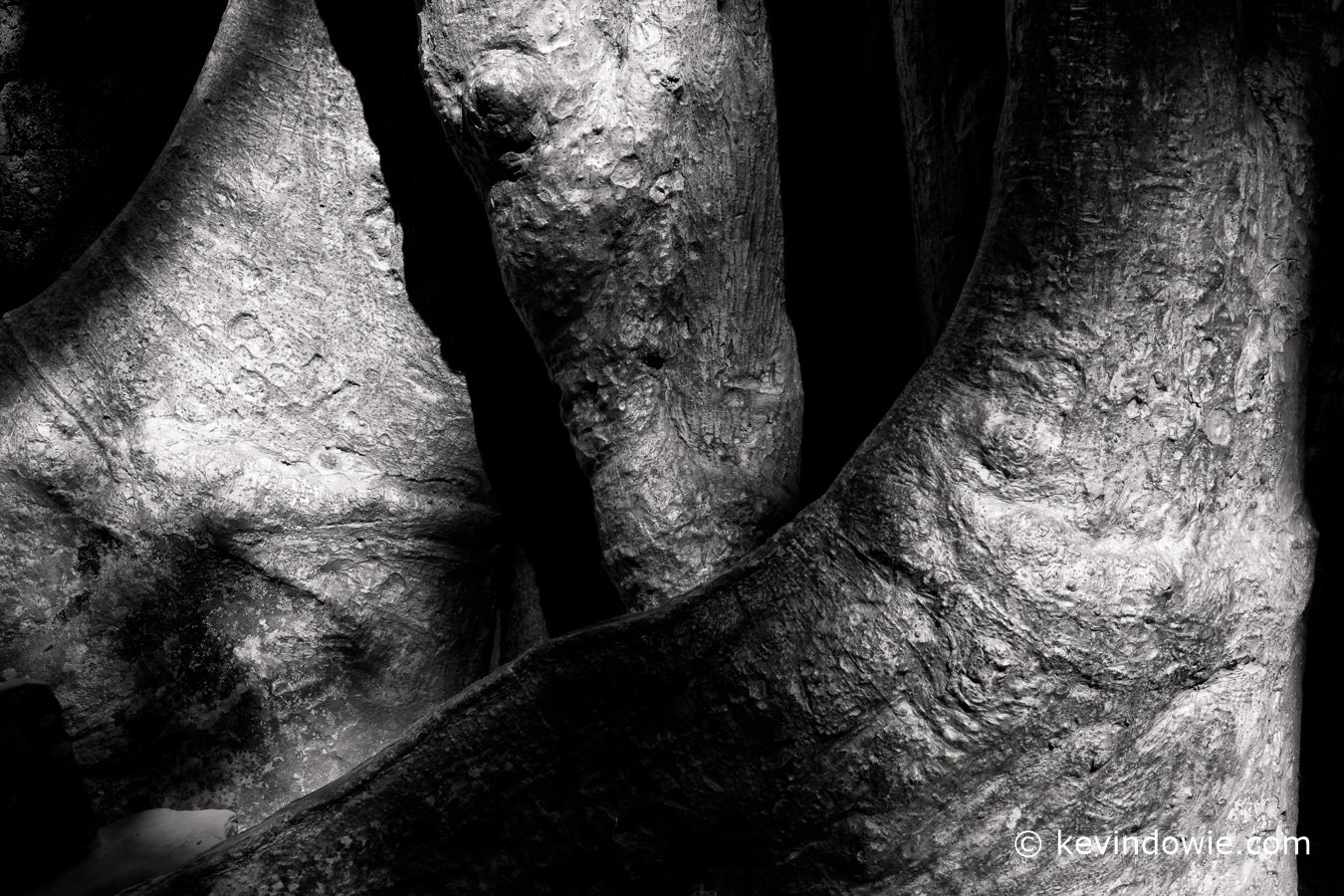 Tree roots, Ta Prohm, Cambodia
Tree roots, Ta Prohm, Cambodia
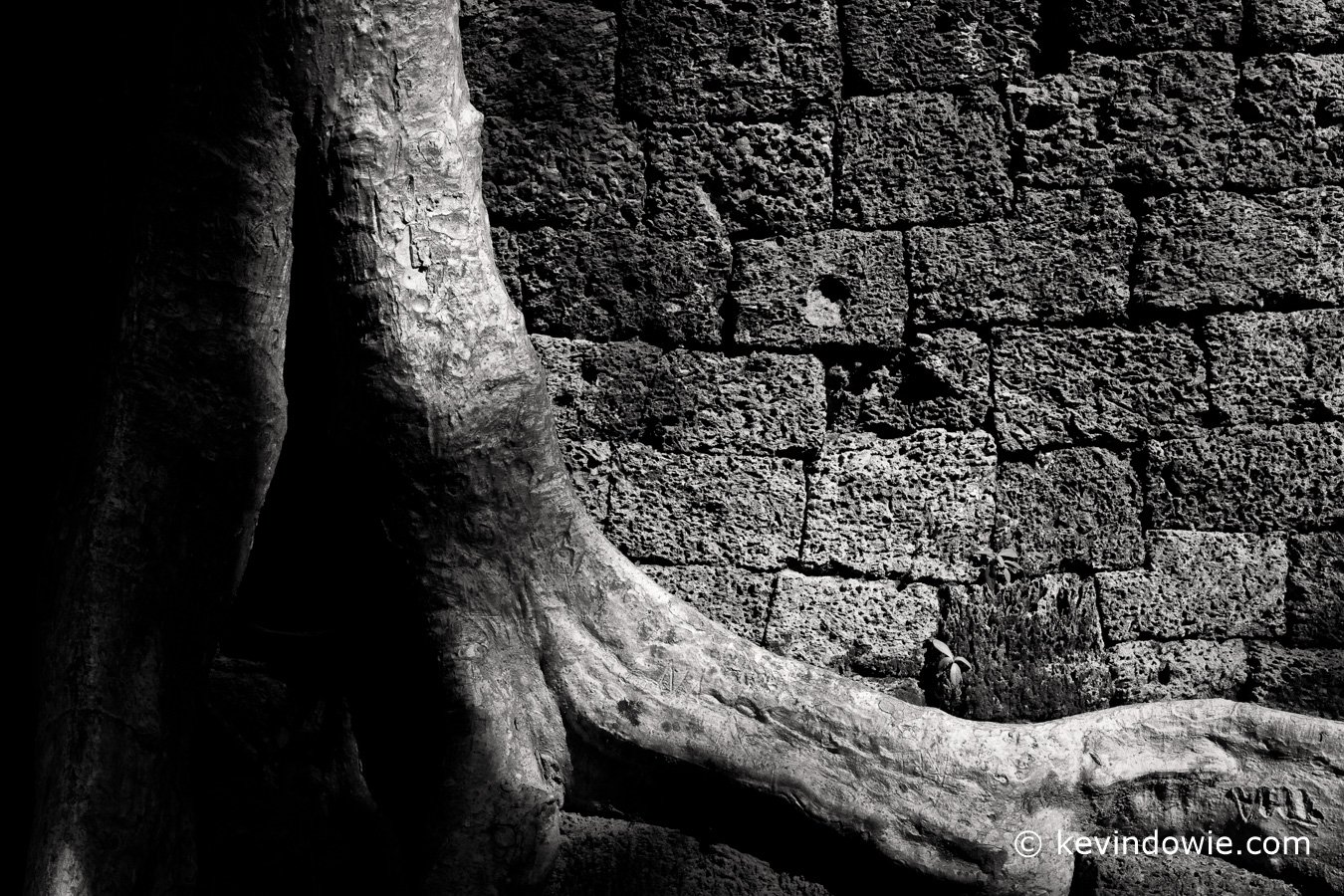 Tree roots, Ta Prohm, Cambodia #2
Tree roots, Ta Prohm, Cambodia #2

Tree roots, Ta Prohm, Cambodia
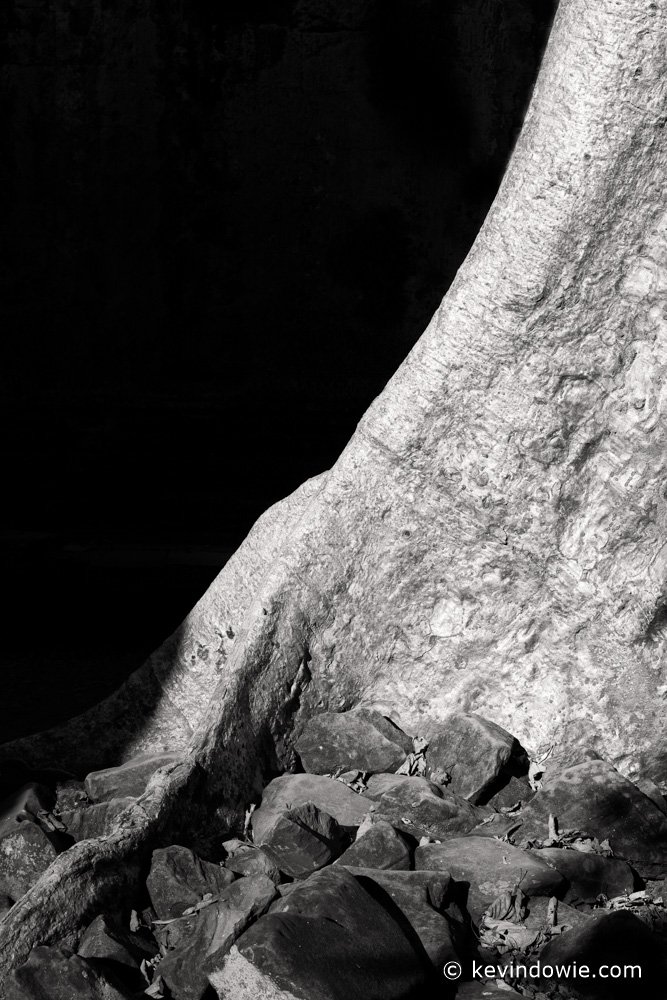
Tree trunk and rocks, Ta Prohm, Cambodia
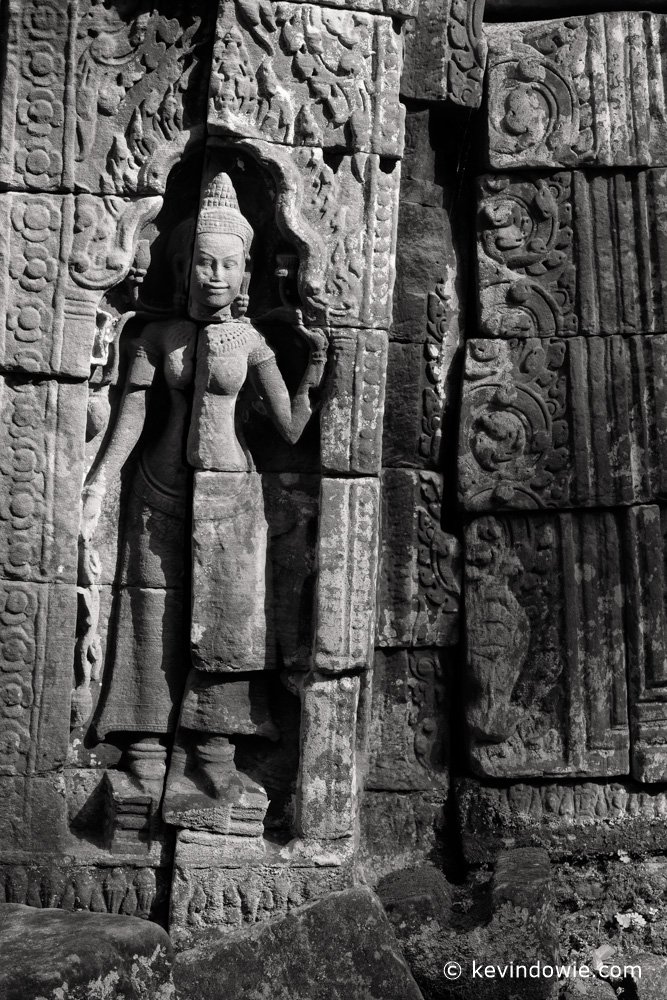
Fractured Apsara, Ta Prohm, Cambodia
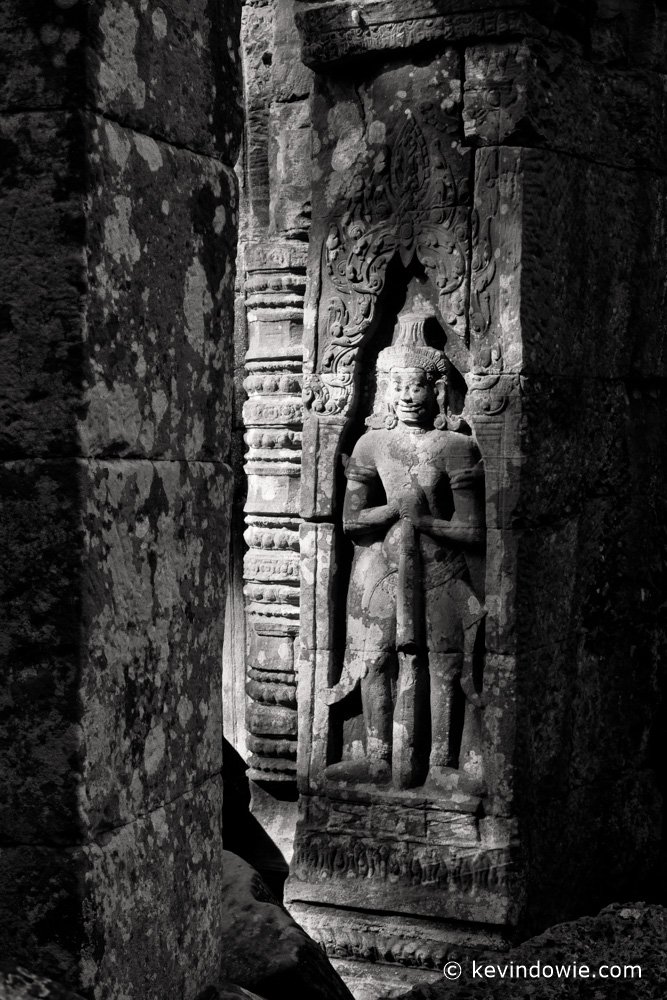
Devata figure, Ta Prohm, Cambodia
Another study in light and deep shadows. Ta Prohm. A fractured apsara.
Apsara carvings
Thousands of apsara carvings have been catalogued among the Angkorian temples in the region. They have dozens of different forms and interpretations. Apsaras are generally seen as dancing maidens. The figure (above) is more correctly a Devata, or temple guardian. In the first real detailed study and inventory of the Angkor Wat apsara and devata carvings, the then 23-year-old Sappho Marchal wrote;
“The devatas seem to epitomize all the elements of a refined elegance,” Sappho Marchal, (1927) Khmer Costumes and Ornaments of the Devatas of Angkor Wat.
The images presented here were processed using Silver Efex Pro, given the subtlest of sepia tonings, and are part of the Cambodia 2018 gallery. ~KD
